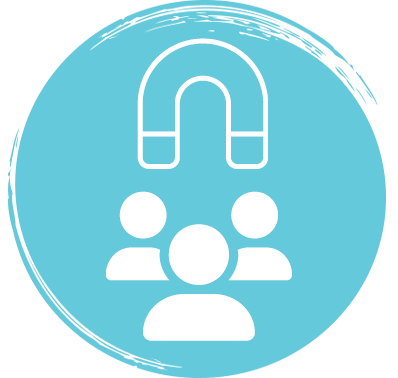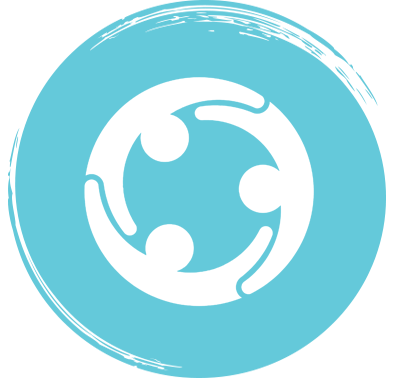Talk about workplace culture in 2022 and one thing is sure to come up: evolution.
Cultures will continue to evolve in reaction to the pandemic that changed everything. Companies will reinvent themselves and employees will help revolutionize their workplaces.
All that can only happen if leaders are open to positive transformation. It’ll be critical to every organizations’ success.
That’s because two-thirds of employees say company culture is a major reason they decide to stay at a job, according to research from Built In. Almost 40% of employees want to leave their jobs because they don’t like the culture, the study also found.
“As a company, you can start looking inward and see what’s great about you,” said Taylor Smith, CEO and Co-founder of Blueboard. “HR leaders are rising in importance as they’re tasked with thinking about the employee experience every day.”
That’s what makes now the time to focus on creating a better workplace culture in 2022. Here’s help – eight strategies and tactics:

1. Think and act in 3s
Many organizations think their culture is built from its vision or mission statement. While that can serve as a guidepost, you might want to focus on three critical cultural aspects: financials, flexibility, and formation.
The executive team at Hylink USA wanted to stay ahead of The Great Resignation. So they talked to employees, asking which benefits stood out to them most, including those they’d heard about or experienced at other companies. Then they broke down the employee experience into three similar categories and decided on changes to make each better.
Some examples they implemented to improve the experience and help the culture evolve:
- Financial. 401(k) with 3% automatic contributions, investable 401(k) account and free counseling with a financial advisor.
- Flexibility and Community. Unlimited vacation, updated paid time off (PTO) policy, five year sabbatical, work from home blocks.
- Formation, which meant the in-office atmosphere. Monthly in-office massages and catered meals, standing desks, team dinners for overtime work, birthday bucks (gift cards for employees).
“Giving employees perks that optimize their work-life balance and investing in their personal futures are benefits for today’s workforce,” said Hylink USA Managing Director Humphrey Ho.
So when you think about workplace culture, you might want to break it into three categories that fit your environment and employees. Then build up from there.

2. Attract to retain
As we transition out of the Great Resignation, most companies will want to focus on retention – retaining the employees who stayed loyal along with the newly hired people.
“Employees were voting with their feet,” Smith said. “People were looking for, ‘Can I bring my whole self to work?'”
So they joined – or stayed at – companies that allowed them to do just that: be their authentic selves at work.
In 2022, you’ll want to work with employee focus groups to uncover ways to make your company a place where everyone can be authentic.

3. Boost belonging
Nearly every company has increased its Diversity, Equity and Inclusion (DEI) efforts in the past few years, which can help build better cultures.
To improve on that, focus on increasing the sense of belonging.
“In an ideal world, all employees feel safe and comfortable to bring their authentic selves to work,” said Kimberly Reed, Chief Transformational Officer, Diversity, Equality and Inclusion Strategist at Reed Development Group, and author of Optimists ALWAYS Win! Moving from Defeat to Life’s C-Suite. “But Belonging is always a key driver of happiness and engagement.”
And that’s the goal in any workplace culture initiatives.
So when you work toward DEI, include the “B.” That often starts with what Reed calls “Courageous Conversations.” Talk with employees about how you can better support equity efforts. Find out how effective all your DEI efforts are by asking employees to share their experiences. Then respond with belonging efforts.
“If the ‘B’ is absent, it makes it more difficult for the ‘D’ to feel like a real commitment at work,” Reed said.

4. Move toward well-being
We don’t mean to harp on this subject, as we’ve covered it extensively since the start of the pandemic. But bottom line is, well-being is critical to the employee experience.
“The biggest challenge facing employers in 2022 is to be able to predict and prevent employee mental health problems early – before they have a negative impact – and create a culture of mental well-being,” said Jan Bruce, CEO and co-founder, meQuilibrium.
One of the best ways to address employee well-being: Normalize it. Make it comfortable for employees to talk about struggles by initiating the conversations. Invite them to learning sessions on mental, spiritual and physical well-being.
Another big step: Offer new or more benefits on a digital platform. For instance, give employees access to virtual counseling for mental health concerns, legal and financial resources and consultations, online support group sessions, plus newsletters and webinars to help with preventive care.

5. Promote work/life balance
A work/life balance isn’t just a “nice to have” now. It’s essential to the employee experience. And you can’t just encourage employees to have it.
HR and front line managers need to promote the balance.
“Grabbing a shred of work/life balance will continue to be difficult due to ongoing change, remote/hybrid work, and blurrier boundaries between work and home,” said Alanna Fincke, SVP, meQuilibrium. “In fact, Portugal just made it illegal for your boss to call, email, or message outside of work hours, and France has a similar rule.”
Take cues from Portugal. You can promote boundaries and work-life balance by imposing consequences for after hour calls, email or messages.

6. Make connections
Almost 80% of employees want to work at an organization where they feel connected to the purpose and the people, according to research from Blueboard. And nearly 60% would consider quitting if they didn’t feel connected at work!
Building connections may be more difficult as remote and hybrid work situations continue into 2022. But it’ll still need to be a corporate priority.
Connection drives engagement and retention. So work toward showing employees how their work impacts the larger purpose and unites the entire workforce. Even better, help them connect how their daily work impacts the community, your customers and, if you’re involved in a cause, the greater good.
A grassroots tactic: Work with employees to revamp job descriptions so they reflect purpose, not just duties. For instance, re-frame the hospital janitorial staff role as “helping sick people,” rather than just “cleaning.”

7. Stand behind and up for DEI
Double down on DEI efforts this year.
“My biggest piece of advice for employers aiming to retain employees amid this competitive job market is to hone in on what employees truly care about – diversity and inclusion,” said Linda Shaffer, Chief People and Operations Officer at Checkr. “What workers really care about {is} that their values align with the core values of their company.”
Fortunately, most HR professionals are already responding. More than 50% have made diversity and inclusion a higher priority in their hiring plans, according to research from Lever and Blueboard.
Remote and hybrid work situations helped pave the way for a more diverse workforce. You can hire from across the town or the continent now. But you want to bolster in-house programs and incentives that make employees feel included.
Look for employees who seem to be champions of causes or informal leaders. Talk with them about areas where you can increase Employee Resource Groups (ERGs). Then give them time and resources to create, build and thrive based on their shared interests and passions.

8. Align rewards with expectations
Employees want to be rewarded and recognized for their work. More importantly, they want recognition and rewards that align with their values. Recognition is an essential tool in creating workplace connection, Blueboard researchers found. Companies that use recognition tools to connect people are nearly twice as likely to address connection challenges than those that don’t use any tools.
Since the pandemic “people value quality time out of the office,” Smith said. “They want things that are valuable to their lives.”
That can be different for each employee. One might love public recognition. Another might hate it. One might like to go out for fine dining. Another might love the zoo.
Managers will want to have informal conversations with employees. Connect personally and understand how they like to be recognized and rewarded. Then HR can help make those things happen.
“People respond and feel good when the company listens to them,” Smith said.
About the author
Michele McGovern is a journalist with decades of experience working for local and national newspapers, business publications and websites. In the professional world, she’s covered HR, leadership, customer service, sales, crime and passion in 25+ years as a journalist. Follow her @sheknowswork on Twitter.
To learn more and subscribe to HR Morning, visit hrmorning.com.
Contents of this article remain the property of the author and/or publisher.
 Drive Results in Your Organization
Drive Results in Your Organization